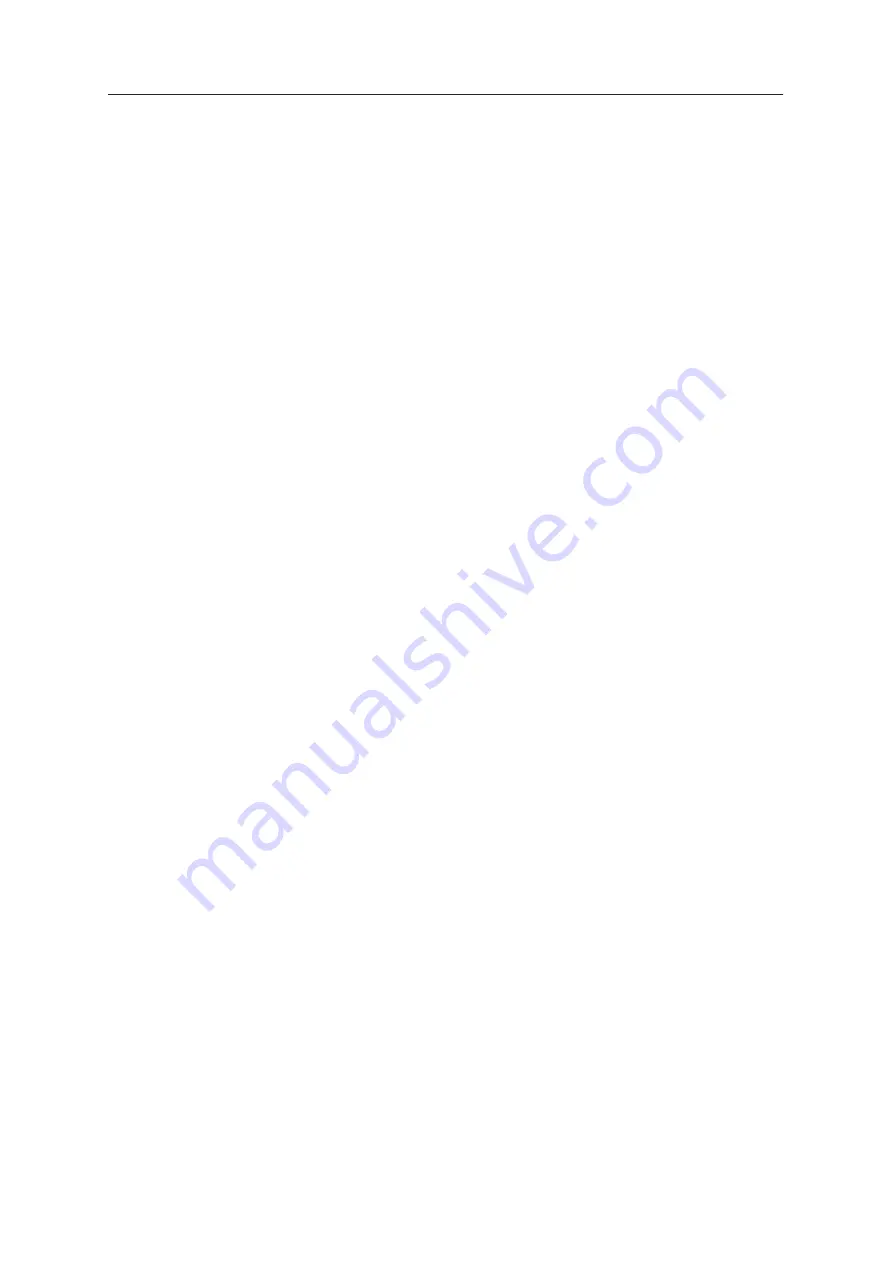
DOC08010 Rev. A (DRAFT 1)
5–9
Stratasys P750K User Guide
Preparing Models for Production
Model
ȱ
preparation
ȱ
involves
ȱ
the
ȱ
following
ȱ
basic
ȱ
steps:
1. Place
ȱ
objects
ȱ
or
ȱ
assemblies
ȱ
on
ȱ
the
ȱ
build
ȱ
tray.
2. If
ȱ
necessary,
ȱ
manipulate
ȱ
the
ȱ
object’s
ȱ
orientation
ȱ
and
ȱ
position.
3. Select
ȱ
the
ȱ
materials
ȱ
and
ȱ
model
ȱ
finish.
Just
ȱ
as
ȱ
Stratasys
ȱ
printers
ȱ
can
ȱ
produce
ȱ
different
ȱ
models
ȱ
on
ȱ
the
ȱ
build
ȱ
tray
ȱ
using
ȱ
different
ȱ
materials,
ȱ
you
ȱ
can
ȱ
produce
ȱ
components
ȱ
of
ȱ
a
ȱ
model
ȱ
with
ȱ
different
ȱ
materials.
ȱ
To
ȱ
do
ȱ
this,
ȱ
each
ȱ
part
ȱ
of
ȱ
the
ȱ
model
ȱ
must
ȱ
be
ȱ
a
ȱ
separate
ȱ
stl
ȱ
file.
ȱ
If
ȱ
the
ȱ
model’s
ȱ
component
ȱ
parts
ȱ
were
ȱ
not
ȱ
saved
ȱ
in
ȱ
the
ȱ
CAD
ȱ
software
ȱ
as
ȱ
separate
ȱ
stl
ȱ
files,
ȱ
you
ȱ
can
ȱ
use
ȱ
Objet
ȱ
Studio
ȱ
to
ȱ
separate
ȱ
the
ȱ
model
ȱ
into
ȱ
component
ȱ
parts.
ȱ
(This
ȱ
is
ȱ
described
ȱ
in
ȱ
“Splitting
ȱ
Objects
ȱ
into
ȱ
Components”
ȱ
on
ȱ
page 19
ȱ
and
ȱ
in
ȱ
“Dividing
ȱ
Objects”
ȱ
on
ȱ
page 51.)
OBJDF Files:
Overview
An
ȱ
objdf
ȱ
file
ȱ
describes
ȱ
both
ȱ
the
ȱ
geometry
ȱ
of
ȱ
a
ȱ
single
ȱ
object
ȱ
and
ȱ
the
ȱ
materials,
ȱ
and
ȱ
finish
ȱ
required
ȱ
to
ȱ
ȱ
it.
ȱ
The
ȱ
objdf
ȱ
file
ȱ
can
ȱ
represent
ȱ
an
ȱ
object
ȱ
that
ȱ
is
ȱ
a
ȱ
single
ȱ
stl
ȱ
file,
ȱ
or
ȱ
an
ȱ
object
ȱ
assembled
ȱ
from
ȱ
component
ȱ
stl
ȱ
files.
ȱ
Objet
ȱ
Studio
ȱ
enables
ȱ
you
ȱ
to
ȱ
split
ȱ
an
ȱ
stl
ȱ
file
ȱ
representing
ȱ
a
ȱ
complex
ȱ
object
ȱ
into
ȱ
an
ȱ
assembly
ȱ
of
ȱ
component
ȱ
stl
ȱ
files,
ȱ
and
ȱ
save
ȱ
the
ȱ
assembly
ȱ
as
ȱ
an
ȱ
objdf
ȱ
file.
ȱ
Each
ȱ
part
ȱ
(stl
ȱ
file)
ȱ
described
ȱ
by
ȱ
the
ȱ
objdf
ȱ
file
ȱ
can
ȱ
have
ȱ
its
ȱ
own
ȱ
model
Ȭ
material
ȱ
characteristic,
ȱ
so
ȱ
that
ȱ
the
ȱ
Stratasys
ȱ
printer
ȱ
produces
ȱ
the
ȱ
component
ȱ
parts
ȱ
from
ȱ
specific
ȱ
materials.
ȱ
Another
ȱ
use
ȱ
for
ȱ
objdf
ȱ
files
ȱ
is
ȱ
for
ȱ
saving
ȱ
a
ȱ
group
ȱ
of
ȱ
separate
ȱ
objects
ȱ
on
ȱ
the
ȱ
build
ȱ
tray
ȱ
as
ȱ
one
ȱ
unit,
ȱ
together
ȱ
with
ȱ
their
ȱ
relative
ȱ
positions
ȱ
and
ȱ
materials.
ȱ
This
ȱ
is
ȱ
especially
ȱ
useful
ȱ
for
ȱ
producing
ȱ
models
ȱ
in
ȱ
the
ȱ
future
ȱ
with
ȱ
the
ȱ
same
ȱ
materials.
ȱ
In
ȱ
fact,
ȱ
when
ȱ
you
ȱ
save
ȱ
objdf
ȱ
files,
ȱ
you
ȱ
specify
ȱ
materials
ȱ
for
ȱ
printing
ȱ
models
ȱ
without
ȱ
regard
ȱ
to
ȱ
the
ȱ
material
ȱ
cartridges
ȱ
loaded
ȱ
in
ȱ
the
ȱ
printer.
ȱ
The
ȱ
same
ȱ
object
ȱ
can
ȱ
later
ȱ
be
ȱ
placed
ȱ
on
ȱ
build
ȱ
trays
ȱ
for
ȱ
printing.
ȱ
Each
ȱ
time
ȱ
you
ȱ
send
ȱ
a
ȱ
build
ȱ
tray
ȱ
to
ȱ
the
ȱ
printer,
ȱ
you
ȱ
decide
ȱ
whether
ȱ
to
ȱ
allow
ȱ
printing
ȱ
with
ȱ
substitute
ȱ
materials
ȱ
or
ȱ
only
ȱ
with
ȱ
the
ȱ
materials
ȱ
specified.
The
ȱ
Connex
ȱ
version
ȱ
of
ȱ
Objet
ȱ
Studio
ȱ
enables
ȱ
you
ȱ
to
ȱ
display,
ȱ
manipulate
ȱ
and
ȱ
ȱ
component
ȱ
parts
ȱ
of
ȱ
a
ȱ
model
ȱ
assembly
ȱ
that
ȱ
was
ȱ
saved
ȱ
as
ȱ
an
ȱ
objdf
ȱ
file,
ȱ
since
ȱ
each
ȱ
component
ȱ
is
ȱ
a
ȱ
separate
ȱ
stl
ȱ
file.
ȱ
This
ȱ
can
ȱ
be
ȱ
useful
ȱ
for
ȱ
printing
ȱ
only
ȱ
specific
ȱ
parts
ȱ
of
ȱ
a
ȱ
model.
Further
ȱ
explanations
ȱ
of
ȱ
objdf
ȱ
files,
ȱ
and
ȱ
their
ȱ
features,
ȱ
appear
ȱ
throughout
ȱ
this
ȱ
chapter.
Model Files
To
ȱ
produce
ȱ
models,
ȱ
you
ȱ
open
ȱ
one
ȱ
or
ȱ
more
ȱ
model
ȱ
files
ȱ
in
ȱ
Objet
ȱ
Studio
ȱ
and
ȱ
position
ȱ
objects
ȱ
on
ȱ
the
ȱ
build
ȱ
tray.
ȱ
You
ȱ
can
ȱ
place
ȱ
objects
ȱ
on
ȱ
the
ȱ
build
ȱ
tray
ȱ
in
ȱ
several
ȱ
ways:
•
by
ȱ
inserting
ȱ
individual stl or slc files
ȱ
(or
ȱ
an
ȱ
assembly
ȱ
of
ȱ
stl
ȱ
files).
•
by
ȱ
inserting an
ȱ
objdf
ȱ
file
ȱ
(an
ȱ
assembly).
•
by
ȱ
pasting
ȱ
objects
ȱ
that
ȱ
you
ȱ
copied
ȱ
to
ȱ
the
ȱ
Windows
ȱ
clipboard
.






























